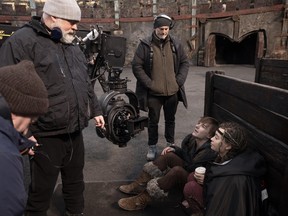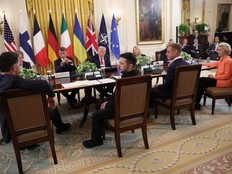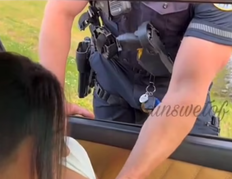Canadian director Dean DeBlois brings animated How to Train Your Dragon to vibrant life

Article content
Reviews and recommendations are unbiased and products are independently selected. Postmedia may earn an affiliate commission from purchases made through links on this page.
When Dean DeBlois was told that DreamWorks was considering turning the beloved How to Train Your Dragon animated series into a live-action movie, he thought that his words might come back to haunt him.
The Canadian filmmaker had previously told people that he was not a fan of live-action remakes. DeBlois thought he had closed the chapter on the Dragon franchise. He co-wrote and co-directed the 2010 animated original and its two sequels, turning the tale of a Viking teen named Hiccup who forms a bond with a young dragon named Toothless into a beloved and lucrative franchise. He received his fourth Oscar nomination for Best Animated Film in 2020 for the second sequel, How to Train Your Dragon: The Hidden World, and had moved on to imagining other worlds. But when the prospect of a live-action version came up, he suddenly felt very protective.
Turning an animated favourite into a live-action film isn’t new, and many have been box-office hits. But recent live-action remakes, including Tim Burton’s Dumbo or Guy Ritchie’s Aladdin, received mixed reviews despite being in the hands of A-list directors. The live-action remake of Snow White and the Seven Dwarves, released a few months ago, received some scathing reviews.
“My first response was ‘OK, I’m going to eat my words,’ ” says DeBlois, who was born and raised in Aylmer, Que., before attending Toronto’s Sheridan College’s prestigious animation program in the late 1980s. “I had been saying that I was not a fan of this trend, and here it was happening to my movie. I felt a very protective instinct, just knowing where the heart is and knowing the characters and the world so well. I said, ‘I know I haven’t made a live-action movie, but would you please consider me as the writer-director? I pledge and promise to bring forward the sense of wonder and emotion that comes from that original, so it doesn’t end up as yet another soulless remake.”

It’s true DeBlois did not have a lot of live-action experience – although he did make the 2007 documentary Heima, about the band Sigur Ros – but it’s hard to argue with his success in the world of animation. His directorial debut, alongside Chris Sanders, was 2002’s Lilo & Stitch. It received an Oscar nod for Best Animated Feature, as did How to Train Your Dragon and its two sequels.
The live-action version, which opens Friday, is not a scene-for-scene remake of the original, but it’s closer to its source material than the 2010 original is to British author Cressida Cowell’s series of children’s books that it was loosely based on.
When Sanders and DeBlois were asked to adapt Cowell’s first book, Dreamworks had already made a few failed attempts to develop a film more faithful to the book. They were given a good deal of creative freedom in interpreting the story. Jeffrey Katzenberg, who was CEO of DreamWorks at the time, gave the two filmmakers three mandates and a tight deadline of 15 months. Fifteen months may seem like a long time, but it probably seemed like a split-second when compared to the long gestation period given to most big-budget animated films.
“He wanted a father-and-son story with a big David and Goliath ending and a Harry Potter tone,” DeBlois says. “He said, ‘Aside from that, I don’t really care what you keep from the books. It’s going to be called How to Train Your Dragon and going to have names like Hiccup and Toothless and Stoick and you’ve only got 15 months and this has to be in cinemas. We moved at a breakneck speed.”
The new version keeps many of the same elements of the original film. Hiccup (played by Mason Thames) is the son of fierce Viking chief Stoick The Vast (played by Gerard Butler, the only actor to return to the role he voiced in the original films) on the Isle of Berk. Dragons and Vikings have been sworn enemies for generations, and the imaginative and lonely Hiccup is expected to become a dragon-killer like his father despite being decidedly ill-suited for the role. He unexpectedly befriends a dragon that he names Toothless and begins to train him. At the same time, he has enrolled in dragon-slaying school with some fellow teenagers, including the formidable Astrid (played by Nico Parker from The Last of Us). Hiccup realizes that his community has been wrong about dragons, but thinks he has little hope of changing centuries of animosity. He is also desperate to both please his father and impress Astrid.
DeBlois says he knew there were certain aspects of the original he wanted to expand on. For one, he wanted to give a more detailed explanation of what the Vikings were doing on the rugged Isle of Berk fighting dragons in the first place, something the original did not make clear.
“From a script point, I was looking into why this tribe ended up on this island, what their backstory is,” he says. “Based on research we did into the Viking age and how far and wide they travelled, I love the idea that they would encounter different cultures in the far reaches that also had dragon problems. The dragon scourge was shared by everyone across cultures, and the Vikings cherry-picked the best dragon-fighting warriors … and brought them to this rock, which they knew was in spitting distance of a key dragon’s nest. So, they were a multicultural task force that was there to wipe out the dragons. Here they are, generations in, and they still haven’t found it.”
He also wanted to explore the origins of Astrid, who becomes Hiccup’s love interest in both films.
“(Astrid) felt a bit underserved in the animated version due to screen time,” he says. “I wanted to understand a little bit more of where she came from and the passion and dedication that she put into the status she now enjoys as the best of their generation and how Hiccup is the son of the chief, privileged and just coasting by with minimal effort, that causes a tension between the two of them. But it also sets up what she will sacrifice for him or for his cause as the film develops.”
This context and the deepening of characters do not dampen the exhilarating impact of the film. The flying sequences are breathtaking, as is the scenery captured by cinematographer Bill Pope in Ireland, Iceland and the Faroe Islands. The special effects, set design and epic scope of the film are spectacular. This is also an outgrowth of the original animated film. DeBlois and Sanders were determined to give it a live-action feel and even hired influential Oscar-winning cinematographer Roger Deakins as a consultant.
“We leaned into a more grounded sense of reality where you could get killed or burned or badly hurt interacting with dragons, you can even lose a limb,” he says. “That was the world we wanted because it heightened the stakes. Since they didn’t want a story inspired by or some variation of How to Train Your Dragon, I said, ‘Let’s make sure that we glean the best of the story and pull in everything that works. But also use the opportunity to lean even more into a grounded sense that live-action can provide, both in expanding the mythology and deepening the characters and the relationships, but also going for a more visceral, palpable immersion when it came to flying and the action scenes.”
How to Train Your Dragon opens Friday.











Postmedia is committed to maintaining a lively but civil forum for discussion. Please keep comments relevant and respectful. Comments may take up to an hour to appear on the site. You will receive an email if there is a reply to your comment, an update to a thread you follow or if a user you follow comments. Visit our Community Guidelines for more information.